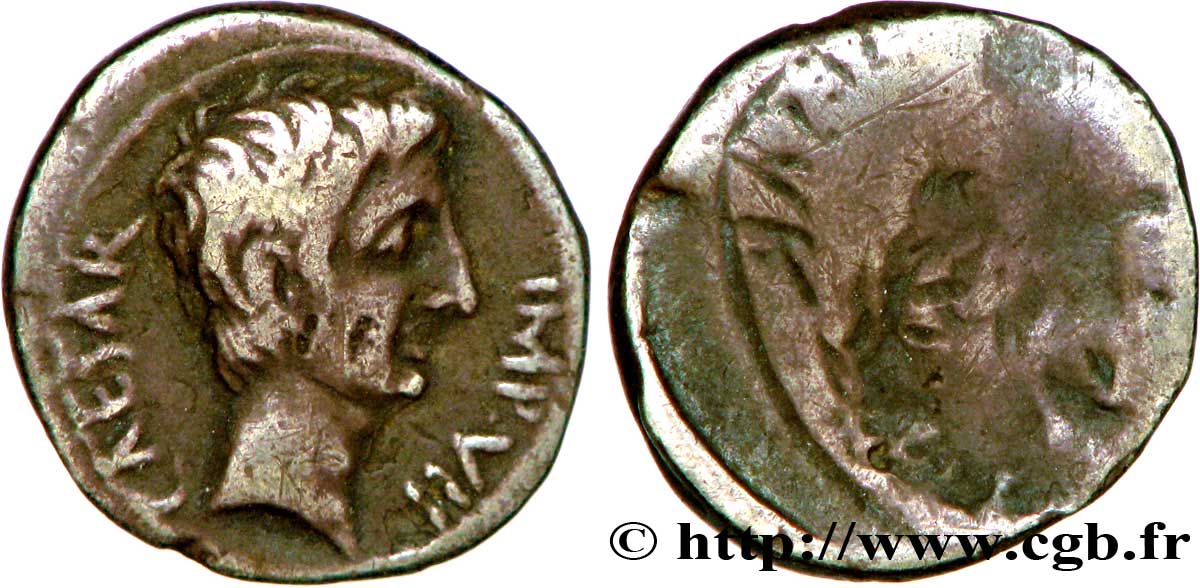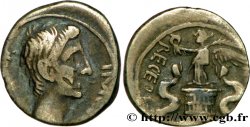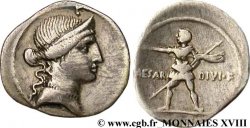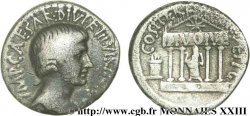- Accueil
- >
- >
v55_0101 - OCTAVIO Quinaire
MONNAIES 55 (2012)
Precio de inicio : 175.00 €
Valoración : 280.00 €
Precio realizado : 175.00 €
Precio de inicio : 175.00 €
Valoración : 280.00 €
Precio realizado : 175.00 €
Tipo : Quinaire
Fecha: 29 AC.
Nombre del taller / ciudad: Asie, Éphèse
Metal: plata
Milésimas de pureza : 950 ‰
Diámetro: 14,5 mm
Peso: 1,58 g.
Grado de rareza: R2
Comentarios sobre el estado de conservación:
Exemplaire sur un petit flan bien centré. Beau portrait d’Octave au droit, bien venu à la frappe, de style fin. Trace de frappe brouillée incuse au revers. Belle patine de collection ancienne avec des reflets gris foncé
N° en los catálogos de referencia :
C.14 (4f.) - RIC.276 - BMC/RE.647 - BN/R.901 - RCV.1568 (400$) - BMC/RR.240 (East) - CRI.429 - RSC.14 - MRK.2 /5
Anverso
Titulatura del anverso: CAESAR - IMP VII.
Descripción del anverso: Tête nue d’Octave à droite (O°).
Traducción del anverso: “Cæsar Imperator Septimum”, (César revêtu de la septième acclamation impériale).
Reverso
Titulatura del reverso: INCUS.
Comentario
Poids très léger. L’attribution de ce quinaire est controversée. C. H. V. Sutherland (RIC. 276) le donne à l’atelier de Rome ou de Brindisium frappé entre 29 et 27 avant J.-C. alors que J.-B. Giard le donne à l’atelier d’Éphèse (BN/R., p. 44, pl. XXXV, n° 899) en août 29 avant J.-C. Le style fait néanmoins penser à un atelier oriental. Petite contremarque sur la joue. Les quinaires incus semblent beaucoup plus rares.
Very light weight. The attribution of this quinary is controversial. CHV Sutherland (RIC. 276) gives it to the mint of Rome or Brindisium struck between 29 and 27 BC, while J.-B. Giard gives it to the mint of Ephesus (BN/R., p. 44, pl. XXXV, no. 899) in August 29 BC. The style nevertheless suggests an oriental mint. Small countermark on the cheek. Incused quinaries seem much rarer
Very light weight. The attribution of this quinary is controversial. CHV Sutherland (RIC. 276) gives it to the mint of Rome or Brindisium struck between 29 and 27 BC, while J.-B. Giard gives it to the mint of Ephesus (BN/R., p. 44, pl. XXXV, no. 899) in August 29 BC. The style nevertheless suggests an oriental mint. Small countermark on the cheek. Incused quinaries seem much rarer








 Informar de un error
Informar de un error Imprimir la página
Imprimir la página Comparte mi selección
Comparte mi selección Haz una pregunta
Haz una pregunta Consignar / vender
Consignar / vender
 Descriptivo
Descriptivo













